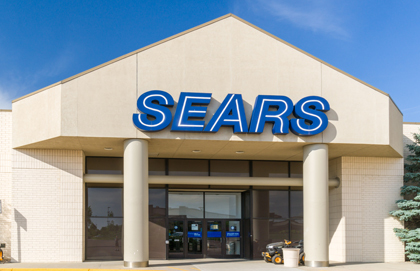We have a Sears at the major mall in Kingston, ON – the Cataraqui Centre. It will close soon I suppose, given the bankruptcy. The same mall saw the closure of Target a few years back, when its Canadian expansion went belly up. Target itself had taken over the space of Zellers, once a mighty force on the Canadian retail scene, after it went defunct. Was there a Kmart there at some point? I don’t know, as that chain shuffled off the scene long ago.
Our publisher, Peter Stockland, likes to quote Chesterton on journalism, namely that it largely consists of announcing that Lord Jones is dead to people who never knew that Lord Jones was alive. There is something like that when a major retail chain closes.
We didn’t know that Sears was in such bad shape because too few people ever went to Sears anymore. The employees suffer, but the customers can’t really complain. After all, if they hadn’t stopped shopping there, the store would not have to close. Perhaps it is Yogi Berra we need. When asked about a particular restaurant, he related that “Nobody ever goes there anymore – it’s too crowded!” In regard to Sears, it might be the opposite, “It’s a great place to go; there’s hardly anyone ever there.”
Do people still go to the mall, with the big anchor Sears at one end, and Eaton’s – sorry, they went bust a long while back – or The Bay at the other? I usually get there a few times a year, but far less than I would have gone twenty years ago.
People still shop of course. A good number do so online, which erodes the positions of retailers all over. But in the department store segment, it seems that people prefer discount options (Walmart, Costco) or more specialized stores, usually higher-end, that don’t carry everything from wedding china to winter boots.
Is that a loss to our common life? I think it is. Not so much the shopping per se, but the meeting place. As a child in the 1970s and teenager in the 1980s, it would not be unusual to be at the mall every week, first with my parents and later on my own, and to run across friends or schoolmates or fellow parishioners in the aisles of Sears or Eaton’s or The Bay. It seemed that the regular wheel of daily life brought us to the mall quite frequently, just as it attracted us to those department stores. That’s where mothers got affordable clothes for their growing kids, and where kids bought $9.99 necklaces for Mom’s birthday.
For cold-weather Canada, the innovation of the shopping mall replicated something of Main Street in a small town, or the market stalls in the town square. Today, I think we are not so keen on brushing up against everybody else as we go about our business. Better to be in a smaller, perhaps with a smaller cohort or, if value is desired, to decamp to the cavernous Costco where your friends might be there but you might not notice, hidden away behind that jumbo-pack of 96 rolls of paper towels.






